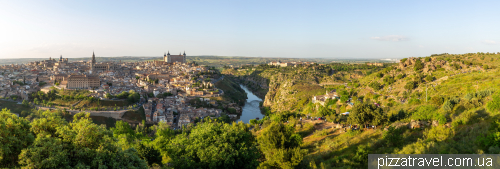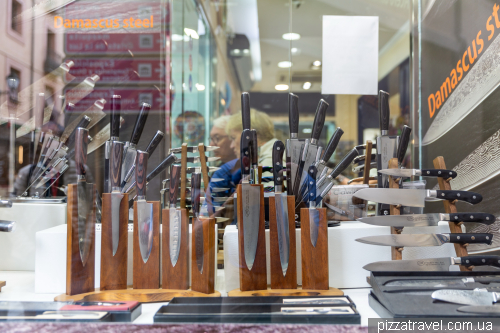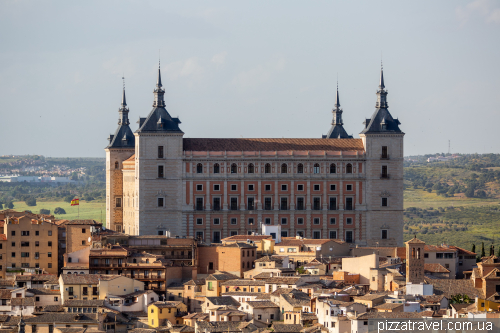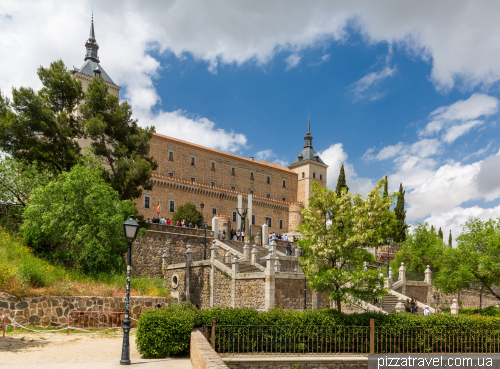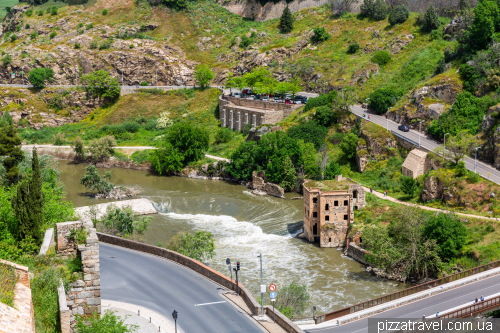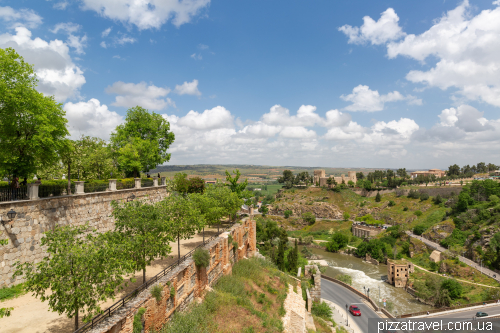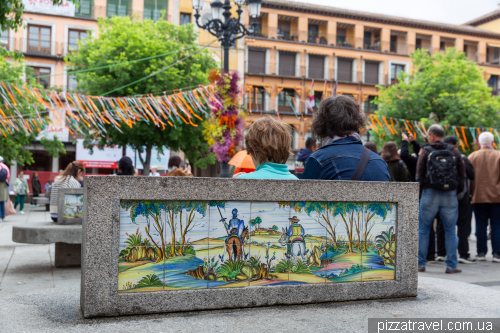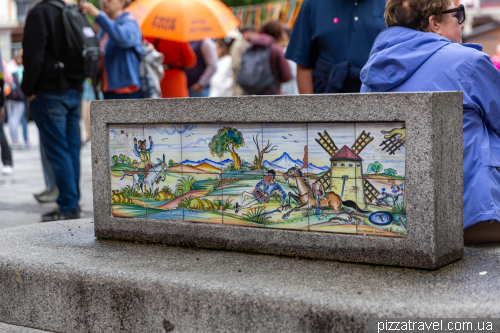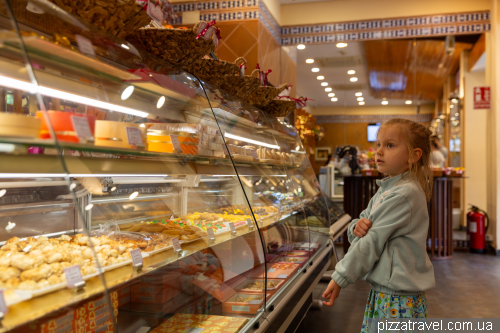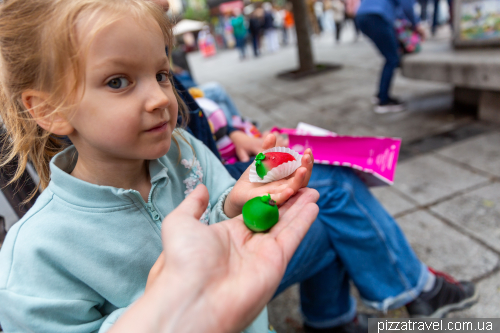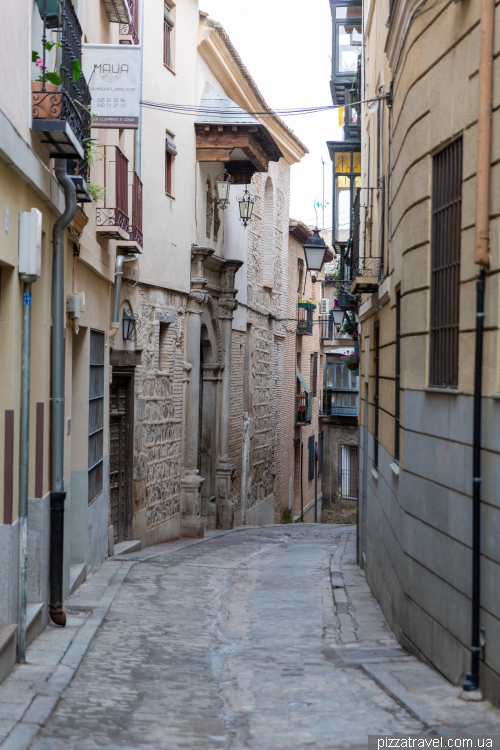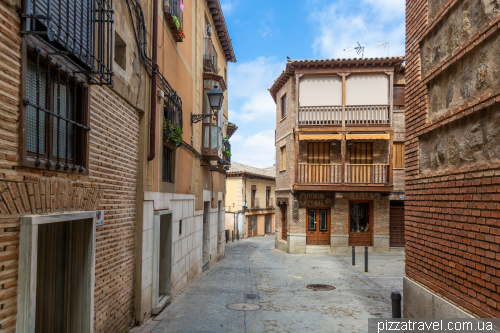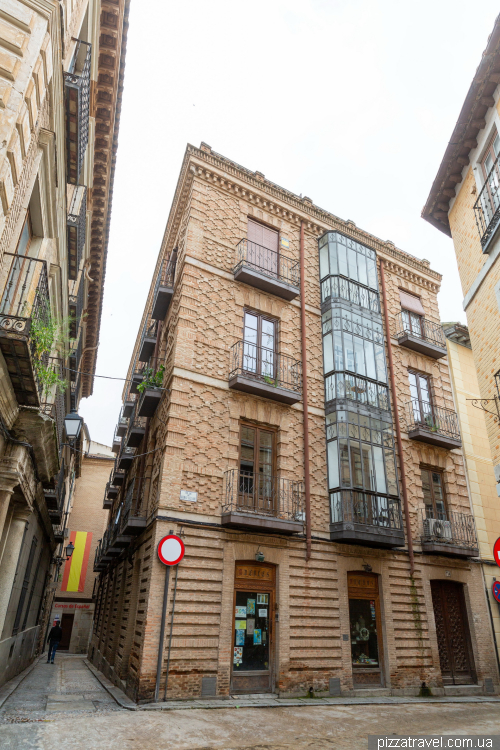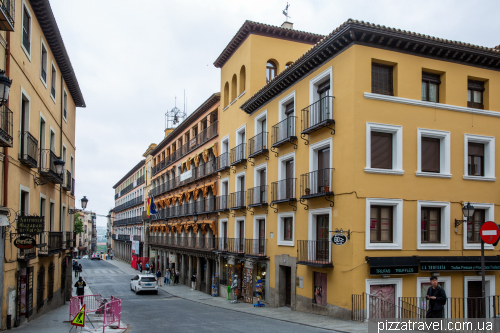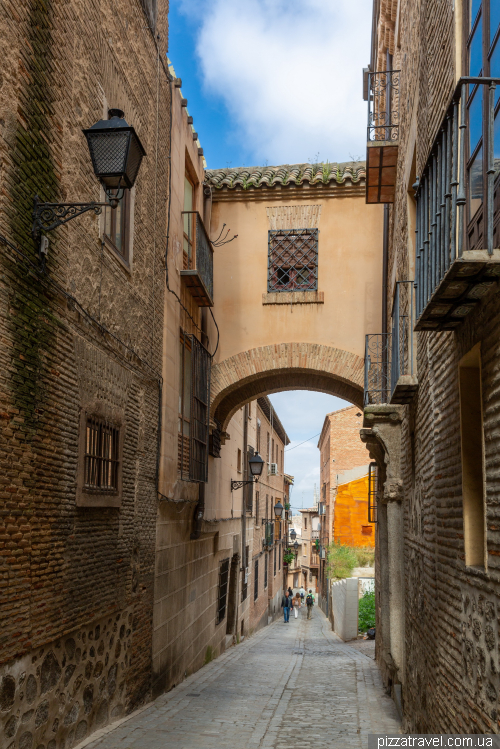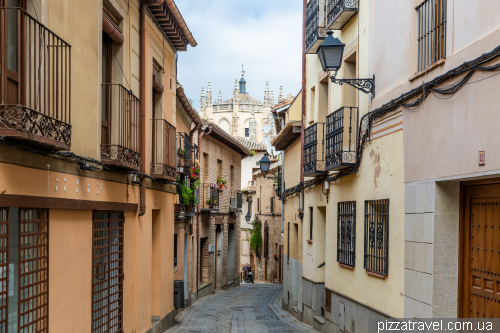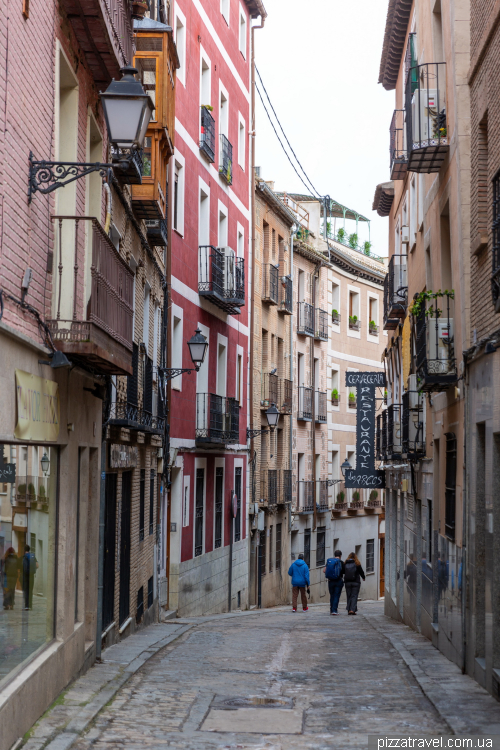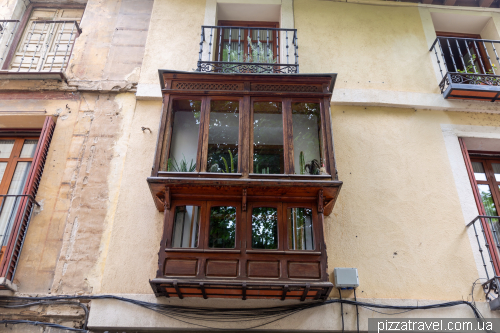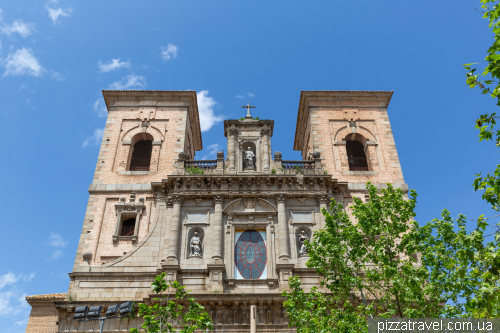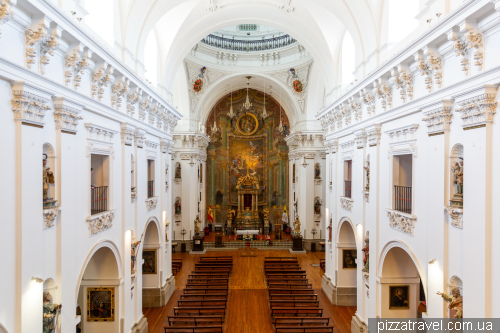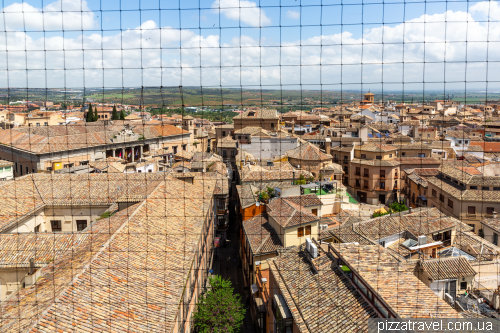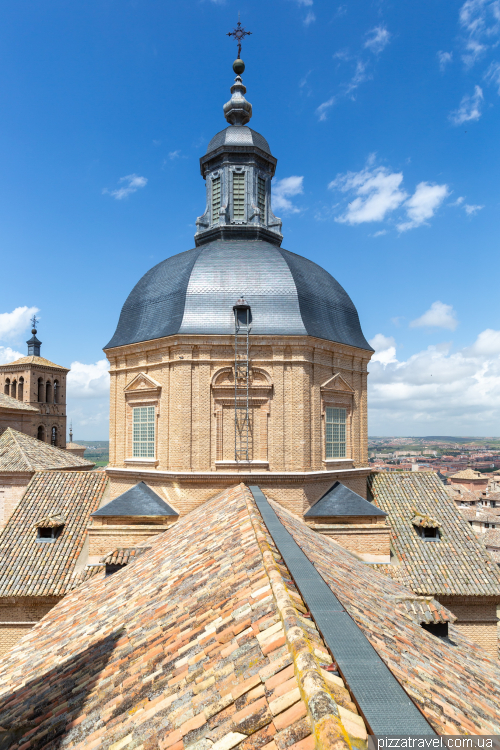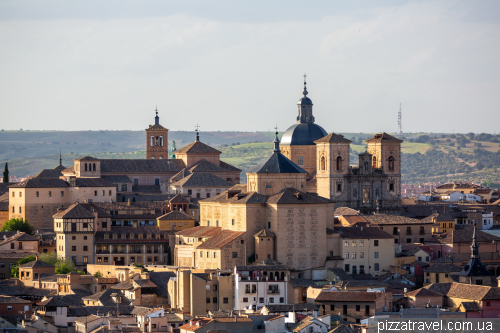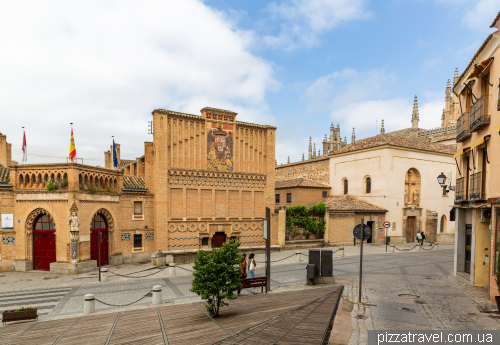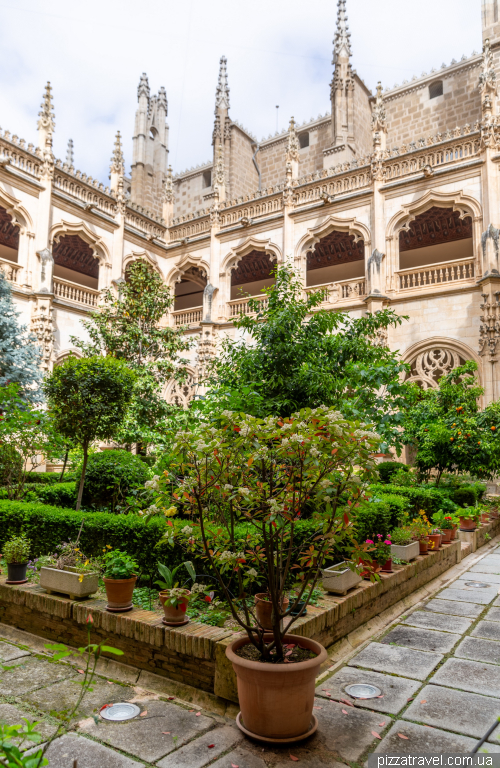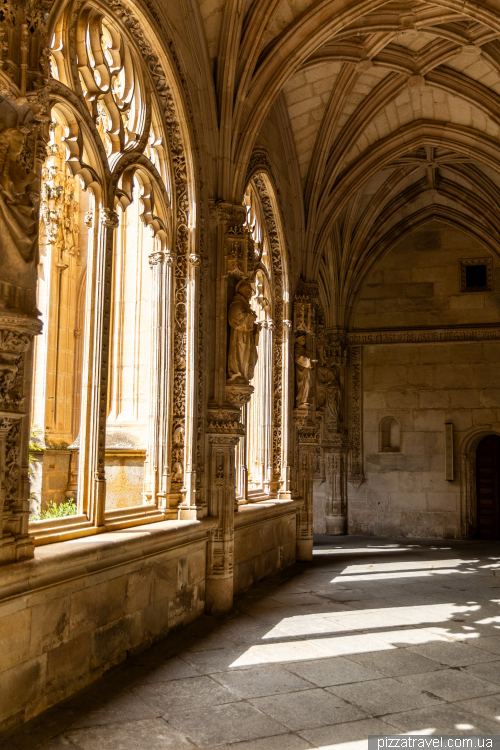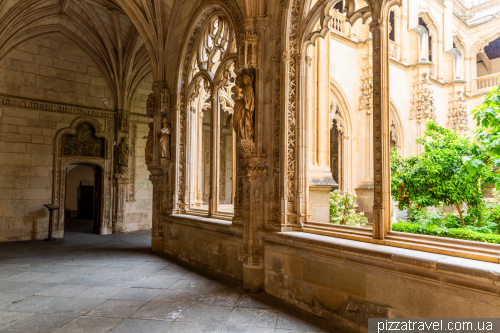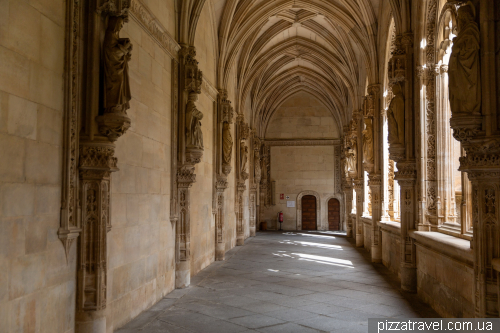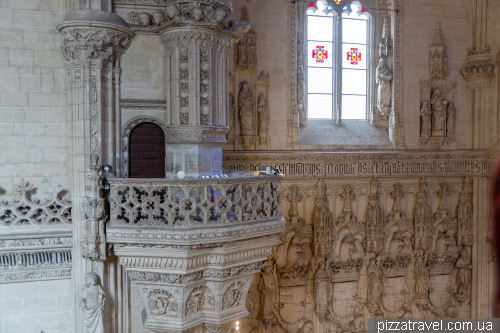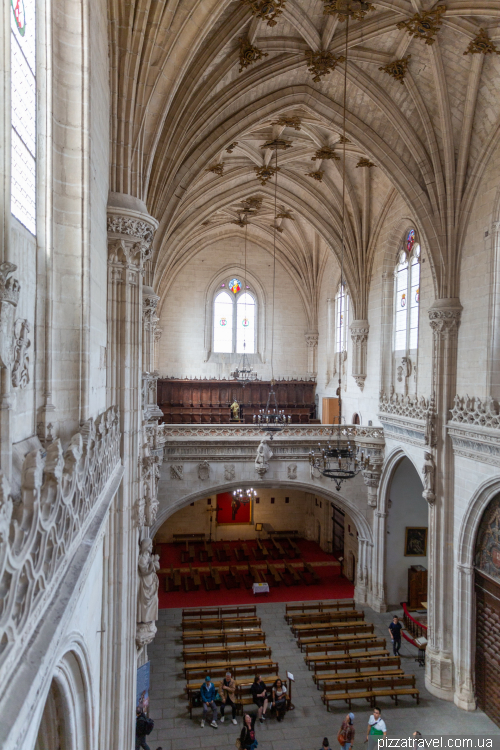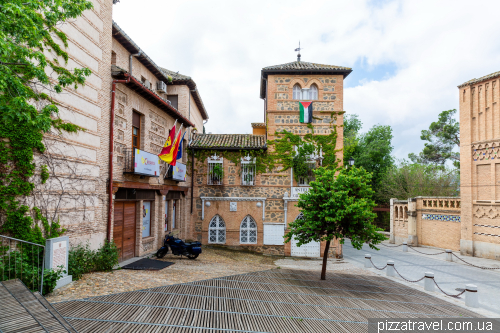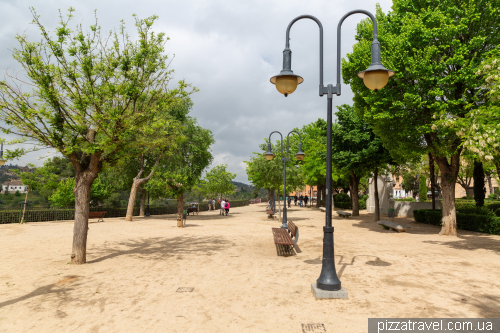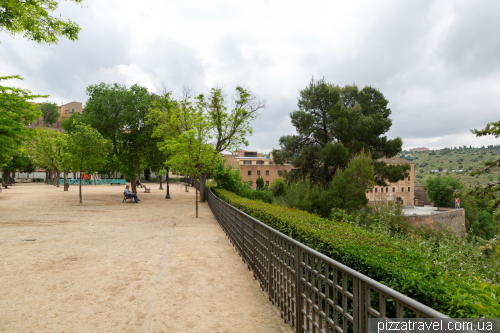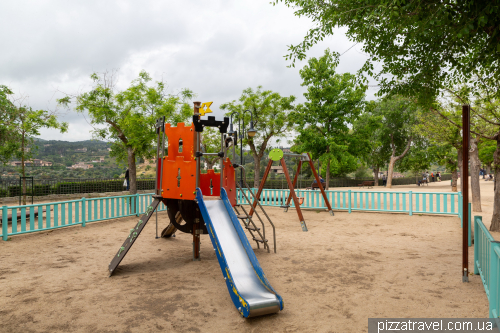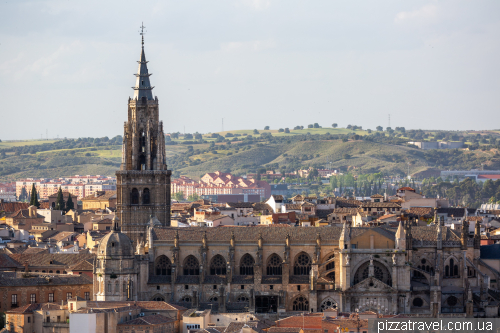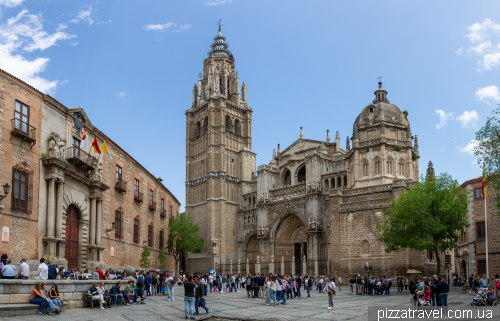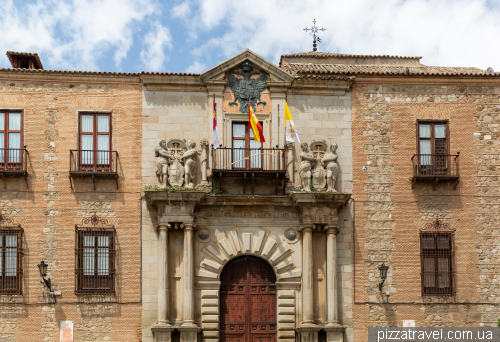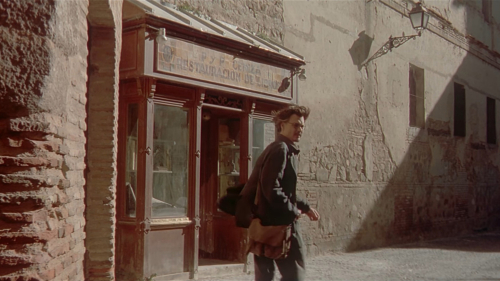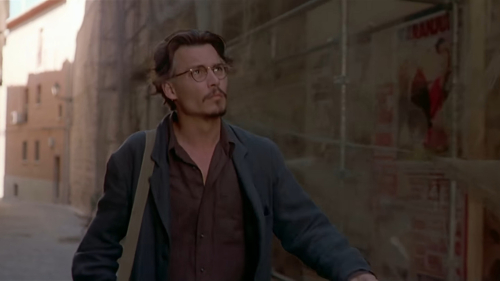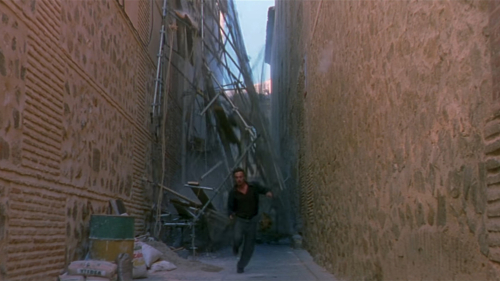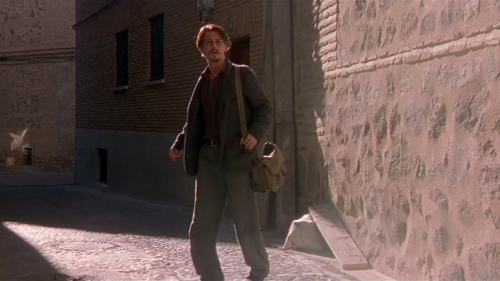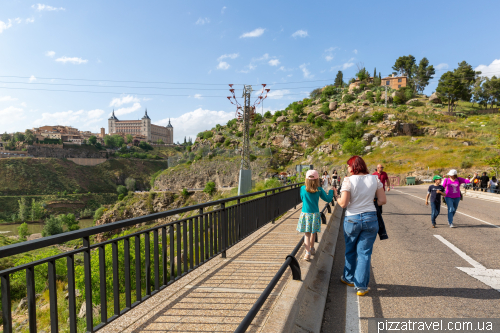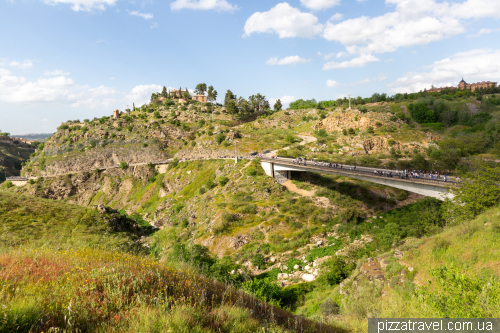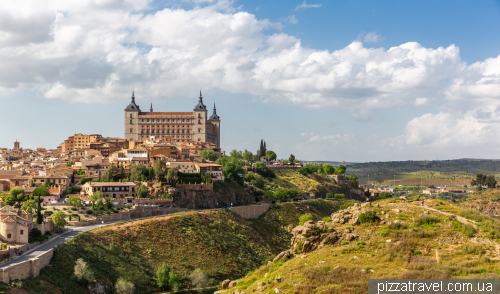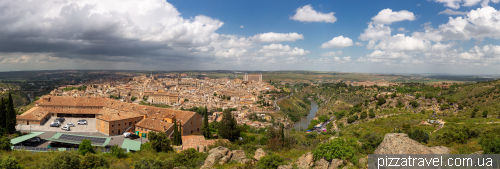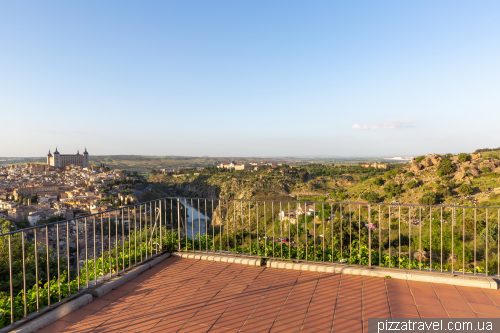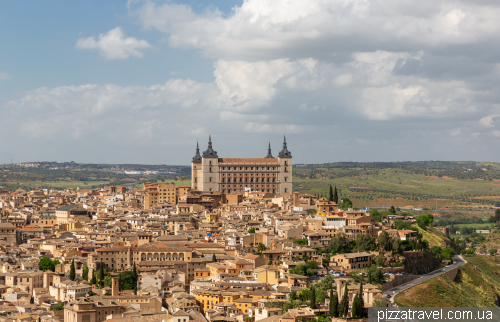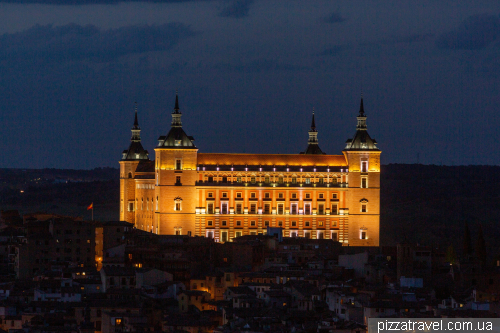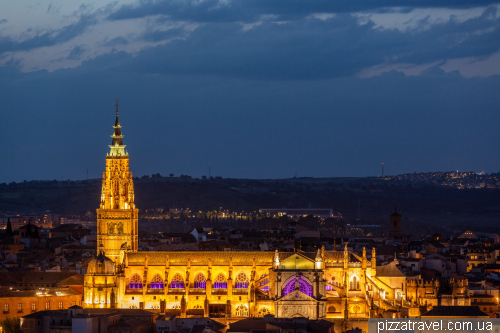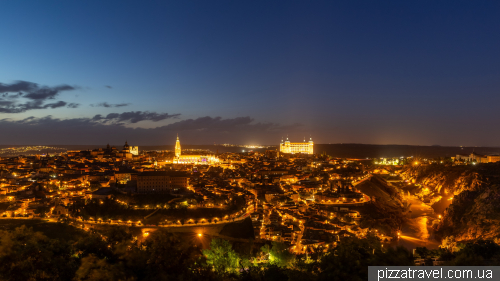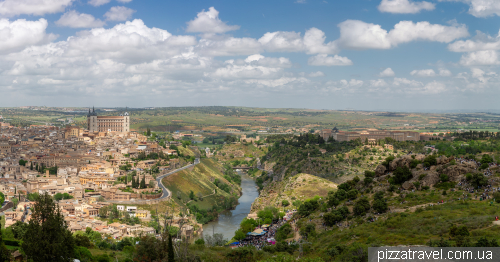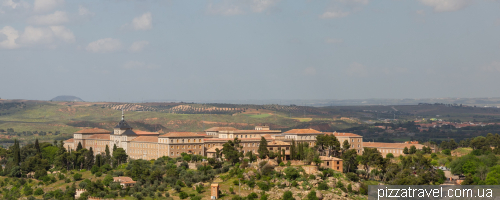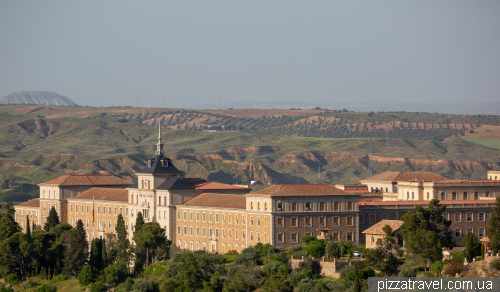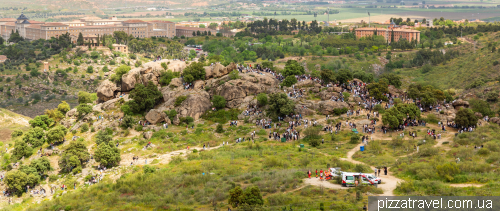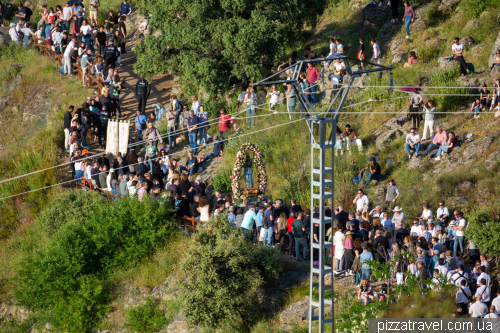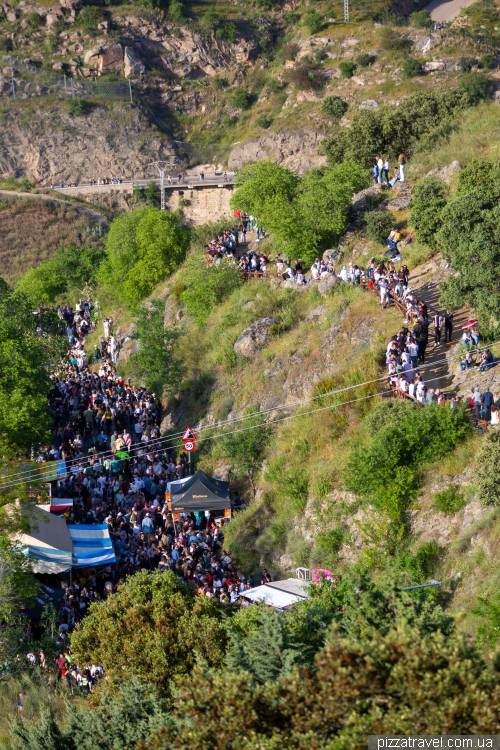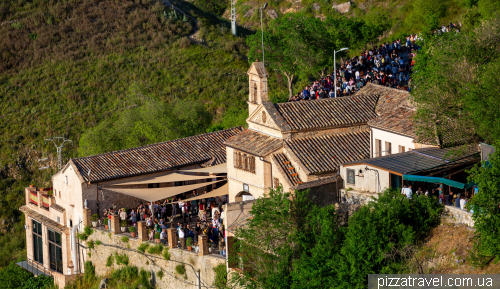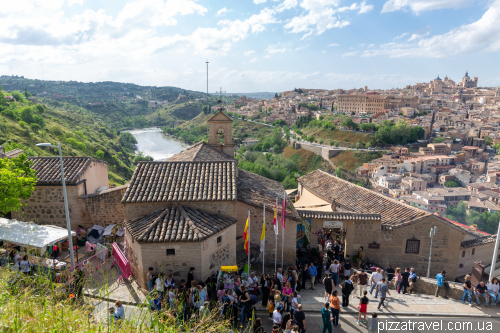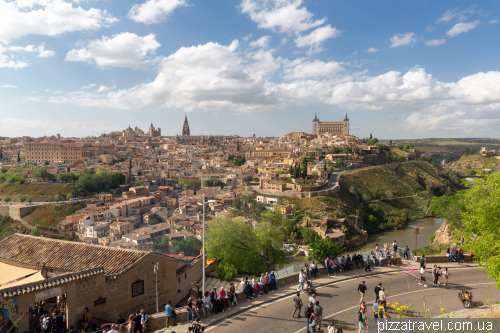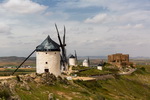The Moors conquered Toledo in 712, and, like many other cities in southern Spain, it was under their rule that the city reached its peak. Due to its more northern location, the Reconquista came to Toledo quite early, and on 25 May 1085, Alfonso VI of Castile conquered the city. Even then, Toledo was famous for its swords and other steel products. If you have seen the film Highlander (1986), a sword from Toledo is used in the plot, which is how I first heard about this city. Nowadays, local knives are a popular tourist souvenir.
After that, Toledo became one of the residences of the kings of Castile and remained so until 1561, when Philip II moved his residence to Madrid. Toledo remained a religious centre.
In the 20th century, Toledo played a crucial role in the history of Spain and Europe as a whole. Local fascists (nationalists) appeared in Spain, led by Francisco Franco, who received support from Nazi Germany and Fascist Italy. They advocated traditional values, the Catholic Church and strong government (how relevant that is today, right?). On the other side were the Republicans, the ruling power, who advocated democratic and social reforms.
On 17–18 July 1936, a military mutiny against the republican government began in Spain. The main events took place on 20 July, when the country split into two camps, with the nationalists winning in some cities and the republicans in others.
In Toledo, the key event was the siege of the Alcázar de Toledo fortress. The fortress was garrisoned by nationalists under the command of Colonel José Moscardó. On 20 July 1936, Republican forces began active attempts to block the garrison in order to capture the fortress. However, the garrison resisted, and the siege became a symbol of the Nationalists' resilience, lasting almost 70 days.
Toledo became one of the first symbols of resistance and a major target of propaganda. The Alcázar became a symbol of the nationalists: its heroic defence was used by Franco to mobilise his supporters. As a result, the rebellion escalated into a full-scale conflict known as the Spanish Civil War (1936–1939). The war claimed the lives of hundreds of thousands of Spaniards and ended with the victory of the Nationalists and the establishment of Franco's military dictatorship. It was not until 1975 that Spain became a democratic country again.
We parked right next to the Alcázar, which now houses a military museum and has a good observation deck at the top. It's also worth taking a walk around the car park, as it's a beautiful area.
Next, we went to the central square, Plaza Zocodover, where an Arab cattle market was once located long ago.
There are several shops selling marzipan, a traditional product of Toledo, in the square. We bought some tasty treats at Confitería Santo Tomé (39.859361, -4.021000).
Next, we went for a walk through the old town to the Jesuit Church of San Ildefonso (Iglesia de San Ildefonso, Jesuit Church). The streets are very narrow and dark, and without a good map on your smartphone, it's easy to get lost. In this respect, we liked the city less than Cordoba.
The church was built in the 17th–18th centuries by the Jesuit order in the Spanish Baroque style with elements of classicism. You can climb the tower for a great view of Toledo.
We did not visit it, but nearby is the Convent of Santo Domingo el Antiguo. El Greco was buried in the convent crypt in 1614, and his tomb is open to visitors. The monastery also has several of the artist's most famous paintings on display. Another place we missed was the Church of Santo Tomé (Iglesia de Santo Tomé), where El Greco's largest and most famous painting, ‘The Burial of the Count of Orgaz’ (El Entierro del Conde de Orgaz, 1586–1588) is kept. There is also an El Greco museum in the city.
Next, we reached the Monastery of San Juan de los Reyes, located in the old Jewish quarter (Judería) and one of the finest examples of late Gothic architecture in Spain. Construction began in 1477 and was originally planned as a mausoleum for the dynasty of Catholic monarchs, but in the end, Granada became their burial place. It is open to visitors.
Let's go for a walk further
We passed by the Synagogue of Santa María la Blanca. It was built in 1180 and is considered one of the oldest in Europe, possibly even the oldest. After the expulsion of the Jews in 1492, it was converted into a Christian church and later used as barracks and a warehouse.
We sat in a tavern in the Paseo del Tránsito park.
Once again, we wandered through the winding streets of the old town. I can't imagine what we would have done without maps.me. Finally, we visited Toledo Cathedral (Catedral de Santa María de Toledo), founded in 1226 during the reign of King Ferdinand III. Construction continued for over 250 years and was only completed in the 15th century.
Johnny Depp fans can also visit these two locations: 39.86036, -4.02701, 39.86051, -4.02534. Scenes from The Ninth Gate (1999)were filmed there, 37:43, 41:50.
But where are the beautiful panoramic views? They are not in Toledo itself, but on the cliffs on the other side of the river. It's quite a long walk to get there, although we actually walked the whole way with our little daughter, as we had plenty of free time and traffic was blocked due to the festival. It's better to take a taxi or drive there in your own car.
We stayed at the Parador de Toledo hotel (booking.com). Its terrace offers the best views, and we highly recommend this hotel if you are travelling by car.
Most tourists view the city from the observation points along the road 39.850417, -4.024972, but we climbed higher.
There is a good viewpoint here 39.847944, -4.022194, which can be reached by a path that starts here 39.848056, -4.023722. You can also park there. And another, perhaps the best viewing point, Piedra del Rey Moro, is located here 39.850111, -4.019889. Here it is, on this rock.
During our visit to Toledo on 1 May, the city was hosting the grand festival of Ermita de la Virgen del Valle, one of the city's most vibrant and beloved traditions, combining religious ceremonies, folk festivities and a unique atmosphere.
We also visited Parque del Crucero, mainly because there was a small playground for our daughter. Playgrounds in Toledo are a complete disaster.
Getting there: if you are travelling by car, it makes sense to park in the old town, at 39.857306, -4.019417. You can get there by train from Madrid in 30 minutes.
